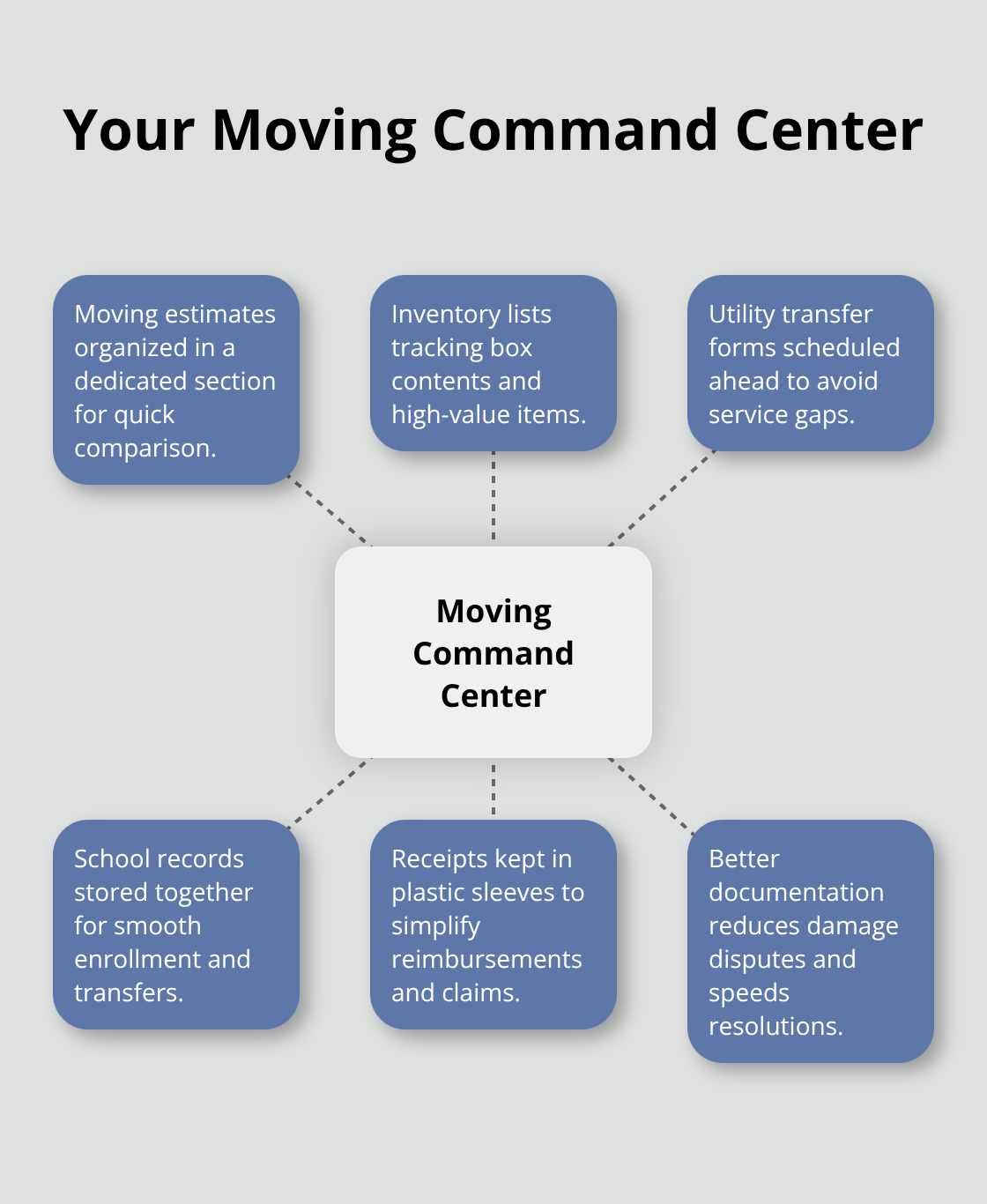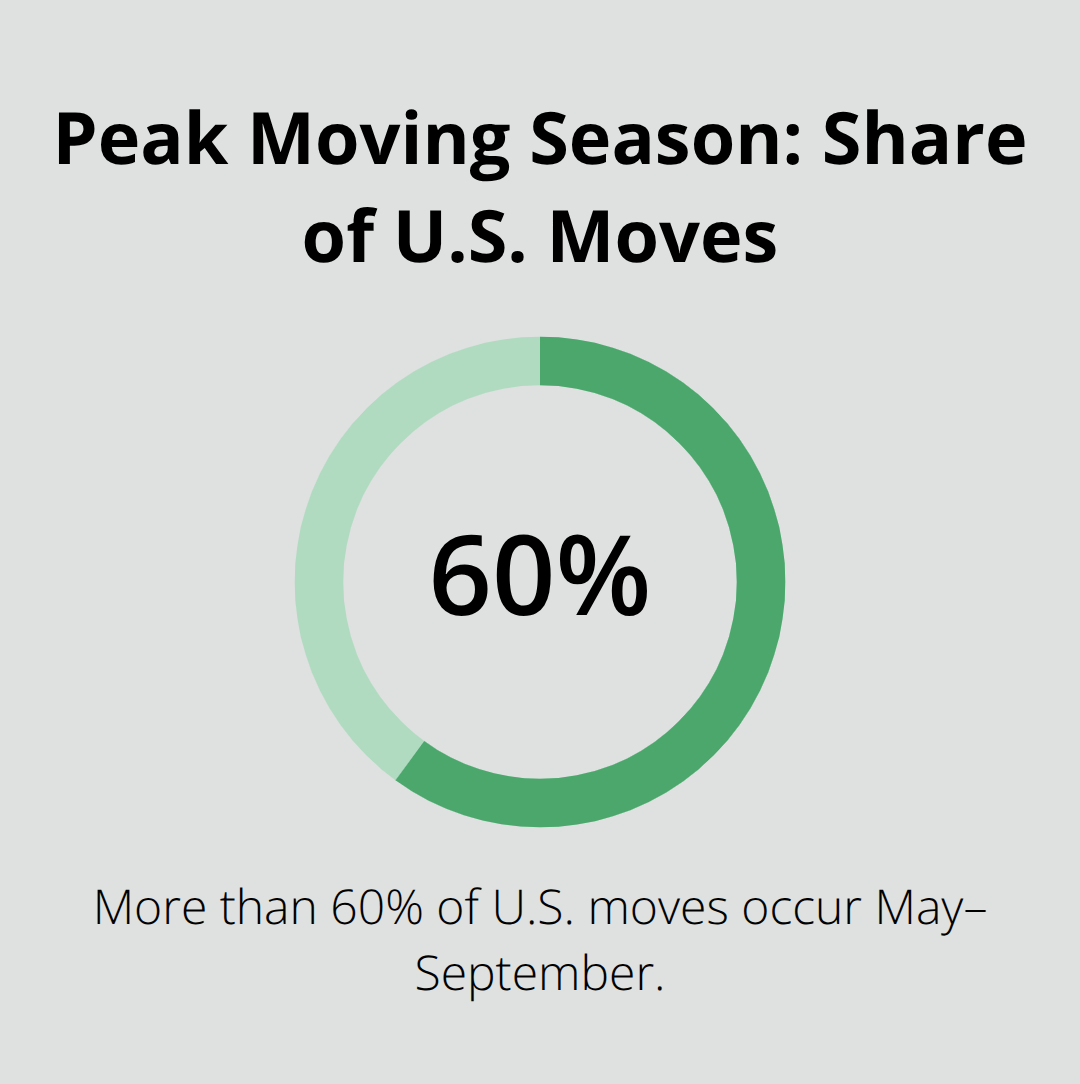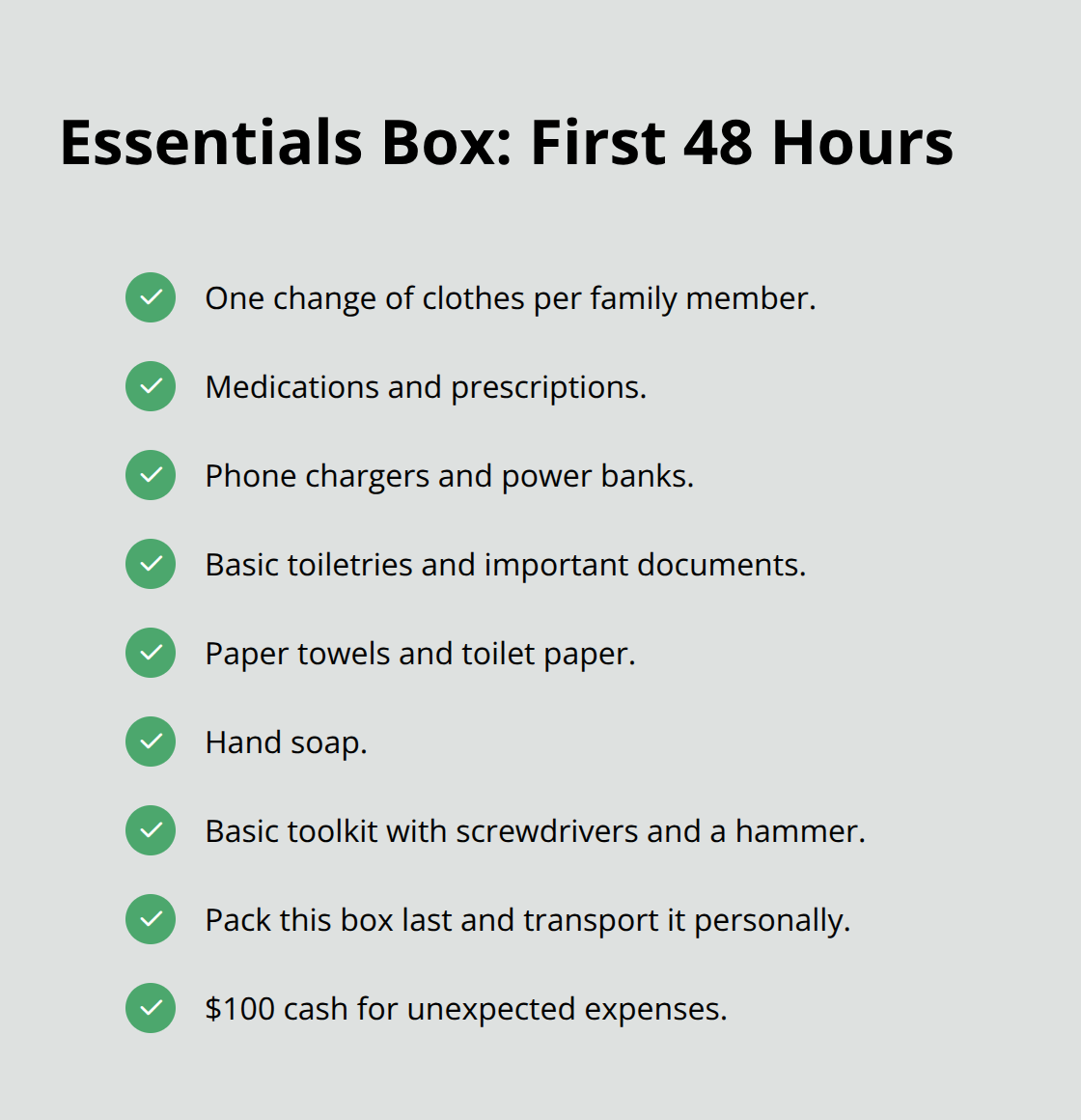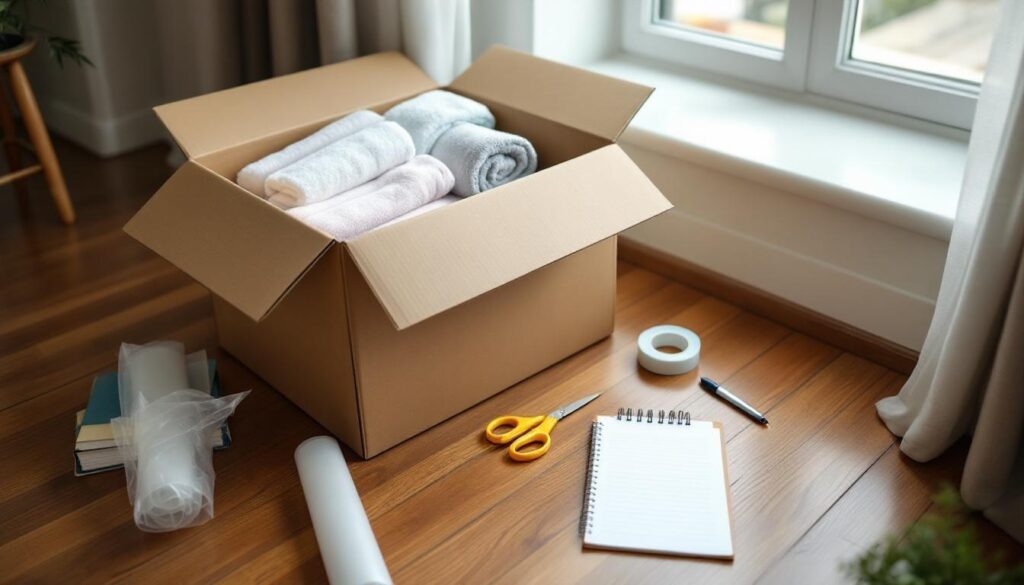Moving house ranks among life’s most stressful events, but proper planning transforms chaos into smooth transitions. A well-structured moving house packing checklist reduces anxiety and prevents costly mistakes.
We at Southbay Moving Systems have guided thousands of families through successful relocations. The right preparation timeline and organization system makes all the difference between overwhelming stress and manageable progress.
When Should You Start Moving Preparations
Start your move preparations 8 weeks ahead to prevent the last-minute panic that affects many movers. This timeline allows you to secure competitive rates from moving companies, which typically increase when booked less than 4 weeks in advance. Professional movers recommend this extended timeline specifically because it reduces stress levels and gives you leverage in negotiations.
Set Up Your Moving Command Center
Create a dedicated moving binder to transform scattered paperwork into organized efficiency. Include sections for moving estimates, inventory lists, utility transfer forms, and school records. Organized movers typically file fewer damage claims because they maintain better documentation throughout the process. Use a three-ring binder with dividers and plastic sleeves for receipts.

This system prevents the common mistake of lost important contracts or contact information during the hectic final weeks.
Lock In Professional Services Early
Moving companies book fastest during peak season from May through September, with more than 60% of moves happening during this period. Contact at least three licensed movers for estimates and compare their insurance coverage (not just pricing). Interstate moves require Federal Motor Carrier Safety Administration registration numbers, which you can verify online.

Quality movers certified through industry associations typically require 6-8 weeks notice for long-distance relocations. Book immediately after you receive satisfactory estimates to secure your preferred dates and avoid premium surge pricing that kicks in during high-demand periods.
Research Moving Company Credentials
Verify each company’s license status through the Department of Transportation database before you make any commitments. Check Better Business Bureau ratings and read recent customer reviews on multiple platforms. Companies with consistent 4+ star ratings across different review sites demonstrate reliable service patterns. Ask potential movers about their claims process and response times for damage reports (legitimate companies provide clear procedures within 24 hours).
Quality packing supplies form the foundation of successful moves, so let’s examine the essential materials you need to protect your belongings.
Essential Packing Supplies and Organization
Professional movers know that cheap boxes create expensive disasters. Heavy-duty corrugated cardboard boxes with double walls prevent bottom failures that damage belongings and create safety hazards. Small boxes (16x12x12 inches) handle books and heavy items, while medium boxes at 18x14x12 inches work for clothes and kitchenware. Large boxes should only contain lightweight items like linens and pillows to prevent injuries. Professional-grade packing tape at least 2 inches wide creates secure seals that won’t fail during transport. Standard household tape fails under temperature changes and weight stress, which causes boxes to burst open during moves.
Color-Coded Systems Cut Unpacking Time
Color-coded labels reduce unpacking time according to professional organizers. Assign specific colors to each room: red for kitchen, blue for bedrooms, green for living areas. Use bright colored tape or markers that remain visible on brown cardboard boxes. This system helps movers place boxes in correct rooms immediately, which prevents the exhausting shuffle of misplaced items. Write room names in large block letters on at least two sides of each box for maximum visibility. Professional movers report that clearly labeled moves require less time for placement and reduce customer complaints about mixed-up belongings.
Pack Your Survival Kit First
Your essentials box becomes your lifeline during the first 48 hours in your new home. Pack one change of clothes per family member, medications, phone chargers, basic toiletries, and important documents in a clearly marked container. Include paper towels, toilet paper, hand soap, and a basic toolkit with screwdrivers and a hammer for immediate furniture assembly.

Professional organizers recommend you pack this box last and transport it personally rather than load it on the truck. Add $100 cash for unexpected expenses like pizza delivery or emergency supplies from local stores.
Quality Materials Protect Fragile Items
Bubble wrap provides superior protection compared to newspaper, which can leave ink stains on delicate surfaces. Wrap each fragile item individually and fill empty spaces with packing peanuts or crumpled paper. Moving blankets protect furniture surfaces from scratches and dents during transport. Professional movers use specialized dish packs with cardboard dividers for plates and glasses, which reduce breakage rates compared to standard boxes.
Room-specific packing strategies maximize protection and efficiency for different types of belongings throughout your home.
How Do You Pack Each Room Efficiently
Kitchen items demand the most careful attention because dishes and glassware break easily during transport. Pack plates vertically in dish packs with cardboard dividers, never stack them flat where weight creates pressure points. Wrap each glass individually in paper and place them in cell boxes designed for stemware. Professional packers report fewer breakages when they use proper dish packs versus regular boxes. Pack heavy items like small appliances in small boxes to prevent injuries. Drain all liquids from coffee makers and blenders 24 hours before you pack to prevent mold growth during storage.
Bedroom Items Require Special Techniques
Vacuum-sealed bags compress bulky comforters and winter clothes to one-third their original size, which saves significant box space and reduces costs. Pack clothes in wardrobe boxes that keep garments wrinkle-free and ready to hang immediately in your new closet. These specialty boxes cost more upfront but eliminate hours of ironing later. Roll t-shirts and casual wear instead of folding them to prevent creases and maximize drawer space in boxes. Pack shoes in their original boxes when possible, or wrap each pair in tissue paper to prevent scuffs. Jewelry requires individual pouches or small containers to prevent tangles and loss during the move.
Electronics Need Temperature and Static Protection
Photograph cable connections before you disconnect any electronics to speed up reassembly in your new home. Original packaging provides the best protection for televisions and computers because manufacturers design these boxes for transport stress. Anti-static bubble wrap prevents electronic damage from static electricity buildup during transport. Pack gaming consoles and sound systems in climate-controlled areas of the truck because temperature extremes damage sensitive circuits (especially during summer moves). Remove batteries from remote controls and portable devices to prevent corrosion leaks that ruin electronics.
Living Room Furniture Demands Strategic Approach
Disassemble large furniture pieces to prevent damage and make transport easier. Keep all screws and hardware in labeled plastic bags taped to each furniture piece. Wrap wooden surfaces in blankets to prevent scratches and dents during the move. Pack books in small boxes because paper becomes extremely heavy when you combine multiple volumes. Fill empty spaces in furniture drawers with soft items like linens to maximize space efficiency. Professional movers recommend you remove glass shelves from entertainment centers and pack them separately with extra padding (this prevents expensive replacements).
Final Thoughts
Your final week demands focused execution of your moving house packing checklist. Complete all packing except daily essentials by 48 hours before your move date. Confirm arrival times with your crew and prepare cash tips for quality service. Pack a cooler with snacks and water bottles because moving day requires physical energy from everyone involved.
Moving day success depends on clear communication with your team. Walk through your home with the crew leader to identify fragile items and special handling requirements. Stay present during loading to answer questions and verify inventory lists (professional movers work more efficiently when homeowners provide clear directions and maintain organized spaces).
Professional packing services eliminate the stress and physical demands of preparation entirely. We at Southbay Moving Systems provide expert techniques and quality materials to protect your belongings. Our trained packers handle fragile items with specialized methods that prevent damage during transport. Professional packing also includes insurance coverage that protects your investment in case of unexpected incidents.




